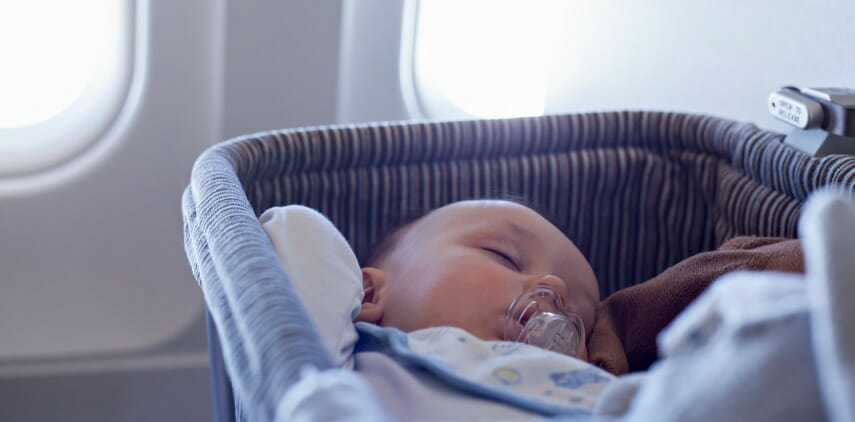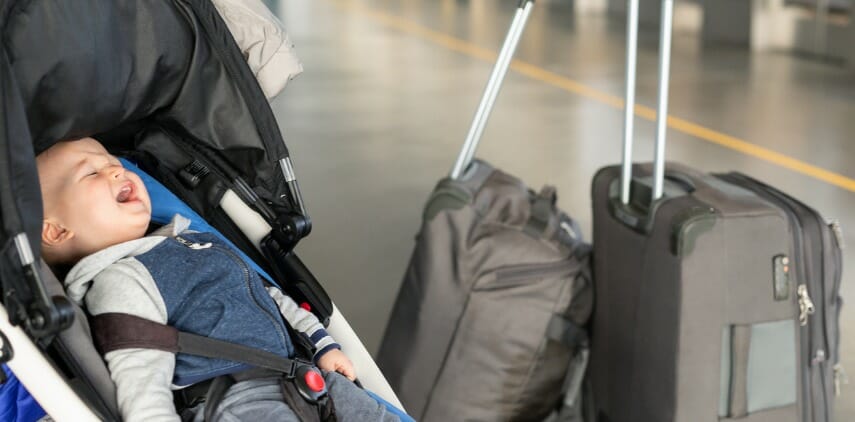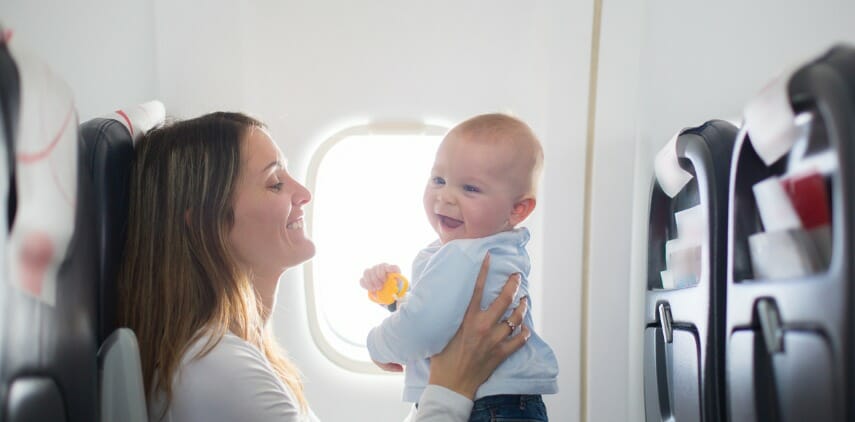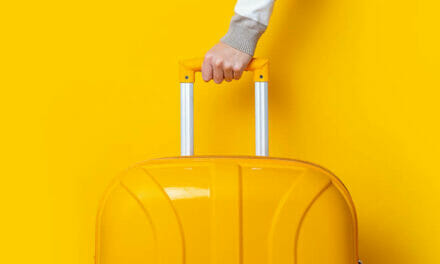Air travel can be challenging at the best of times, but flying with an infant can be downright daunting, especially if it’s your first time. However, there are a few things you can do to make the process go as smoothly as possible.
Book Your Flight at the Right TimeWhen traveling with a baby, booking your flight at the right time is essential. It is best to choose either a direct flight or one with a long layover. A layover allows you to feed and change your baby without rushing to the next departure terminal.
You should also look for flights that coincide with your baby’s sleep schedule. This will make it more likely that your infant will sleep for the duration of the flight and minimize crying and fussy behavior.
Ensure Your Child Has All Their DocumentationA passport is required for all international travel, no matter your age, and you’ll need to obtain a visa if you travel to certain countries. Ensure your baby’s passport is up-to-date.
When traveling internationally with a child under 18, you’ll also need a notarized letter of consent from the other parent if they’re not accompanying you on the trip. You should also bring along your child’s birth certificate so that you can prove their identity if necessary.
Keep all documentation in a separate travel folder in a readily accessible pocket in your carry-on or diaper bag. It’s also a good idea to have both a hard copy and a digital copy of your tickets and travel itinerary.
Notify the AirlineDepending on which type of ticket you reserve, some airlines will have extra seats reserved for families traveling with young children. For example, American Airlines’ automated booking system groups family members together, even if you’ve booked basic economy tickets.
These seats may have extra legroom or feature a bassinet. This allows room for changing diapers, allowing young kids to stretch their legs and play, and providing a space to sleep during the flight.
If financially possible, purchase an additional seat for your baby. The American Academy of Pediatrics (AAP) recommends that infants travel in an FAA-approved car seat (without the base) tethered to the airplane seatbelt or an airplane harness. This provides the best protection for your infant against turbulence and gives them a comfortable place to sleep. Car seats also signify to your baby that it is time to travel and can help them prepare for the flight.
Check your airline’s child passenger guidelines to determine whether you can take a car seat on the flight. You can also check what type of car seats are permitted and whether there are seat location restrictions for car seats (the FAA prohibits car seats and people caring for small children in exit row seat numbers).
Use a Pacifier or Breastfeed When Taking Off and LandingWhen flying with a baby, it is recommended that you use a pacifier or breastfeed during takeoff and landing. This helps to equalize the pressure in your baby’s ears and can help to prevent pain and discomfort.

It is also essential to ensure the baby is well-fed and slightly drowsy before flying, as crying and irritability can worsen ear pain. Try to feed your baby during takeoff and landing, and give them a full feeding an hour or so before the flight.
You may also want to tether the pacifier to your baby’s clothing or your own clothing to prevent it from falling on the ground.
Place Your Baby in a CarrierNavigating the airport terminals can be one of the biggest challenges when flying with a baby. While strollers can be a convenient way to transport your baby around the airport, they are often subject to additional security screening, and you need to check it at the gate before you board the plane. This means you need to carry both your child and your carry-on while trying to find your boarding pass and plane seat.
Putting your baby in a carrier frees up your hands for other tasks, such as carrying luggage or accessing travel documents. Carriers come in various styles, including Mei Tai, Baby Bjorn, slings, and wraps. If you don’t usually use a carrier, choose one that is comfortable to put the baby in and out of and practice using it before your flight.
Go to the Restroom Before Your FlightOnce you’re on the plane, there may not be an opportunity for a toilet break. Make sure to go to a restroom before boarding the flight. Try to find a family restroom at the airport. This will allow you to change your child’s diaper, use the restroom yourself, and wash your hands before getting on the plane.
Pack a Busy BagFor older babies, entertainment is crucial when flying. A busy bag is a small bag filled with activities and games to help keep your child occupied during the flight. It’s a great way to avoid relying on the in-flight entertainment system, which can be expensive or unreliable.
You can pack items such as coloring books, puzzles, and small toys. It’s a good idea to include one of their favorite toys and a new toy to help hold their attention.
You can also download several of your baby or toddler’s favorite nursery rhymes, TV shows, or movies on a tablet or smartphone and use child-friendly headphones.
Prepare All Liquids Before DepartureWhen packing carry-on bags for travel with young children, it’s important to remember that all liquids need to be prepared in advance.
Liquids such as breast milk, formula, and juice are exempt from the TSA’s 3-1-1 carry-on liquids rule, but they need to be screened by security separately.
To make the screening process as smooth as possible, ensure that the quantity does not exceed 3.4 ounces. Also, pack these liquids in clear bottles secured in a separate Ziploc plastic bag that can be easily accessed.
Pack SnacksHealthy snacks and baby food will help to keep your child’s energy up and prevent them from getting cranky. Jarred baby food is permitted in your carry-on by the TSA, but it needs to be screened separately. Ensure your baby food is contained in a clear jar or container, not a plastic bag or pouch; otherwise, it cannot be scanned by the TSA’s bottle scanner.
Some good options include fruits, vegetables, whole-grain crackers, and yogurt. Also, pack enough snacks for the entire trip.
Invest in a Compact StrollerParents with young children know how difficult it can be to travel, especially by air. Not only do you have to contend with the challenges of entertaining a young child in a confined space, but you also have to lug all their gear through the airport.

A compact stroller makes it easier to get through the airport and allows you to keep your child close while still having your hands free to carry luggage or deal with other logistics.
Many compact strollers can be easily gate-checked, meaning you won’t have to worry about carrying it through the airport or dealing with the hassle of checking it at the ticket counter.
Ask for HelpThe airline staff is prepared and happy to help parents traveling with infants. Gate agents can help you check in strollers and car seats. Flight attendants can provide you with a blanket or extra pillows to make your baby more comfortable, or they can hold your baby while you use the restroom.
Make Traveling with Infants EasyWhether traveling on an international or domestic flight, flying with an infant doesn’t have to be stressful. Preparing ahead can make the experience much easier for you and your child.










